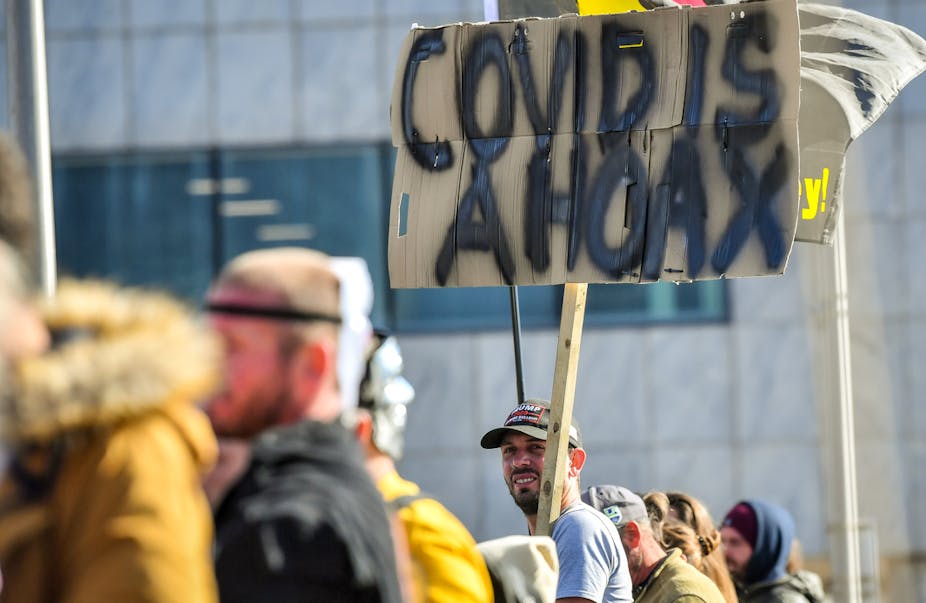 |
| John Rutherford |
Discredit, disrupt, and destroy.
That is how the government plans to get rid of activists and dissidents who stand in its way.
This has always been the modus operandi of the FBI (more aptly referred to as the Federal Bureau of Intimidation): muzzle anti-government sentiment, harass activists, and terrorize Americans into compliance.
Indeed, the FBI has a long history of persecuting, prosecuting and generally harassing activists, politicians, and cultural figures.
Back in the 1950s and ‘60s, the FBI’s targets were civil rights activists, those suspected of having Communist ties, and anti-war activists. In more recent decades, the FBI has expanded its reach to target so-called domestic extremists, environmental activists, and those who oppose the police state.
Back in 2019, President Trump promised to give the FBI “whatever they need” to investigate and disrupt hate crimes and domestic terrorism, without any apparent thought for the Constitution’s prohibitions on such overreach.
That misguided pledge sheds a curious light on the FBI’s latest nationwide spree of SWAT team raids, surveillance, disinformation campaigns, fear-mongering, paranoia, and strong-arm tactics.
For instance, just before dawn on Jan. 25, 2019, the FBI sent 29 heavily armed agents in 17 vehicles to carry out a SWAT-style raid on the Florida home of Roger Stone, one of President Trump’s longtime supporters. Stone, charged with a political crime, was taken away in handcuffs.
In March 2021, under the pretext of carrying out an inventory of U.S. Private Vaults, FBI agents raided 1400 safe deposit boxes in Beverly Hills, seizing “more than $86 million in cash as well as gold, jewelry, and other valuables from property owners who were suspected of no crimes.”
In April 2021, FBI agents raided Rudy Giuliani’s home and office, seizing 18 electronic devices. More than a year later, Giuliani has yet to be charged with any crimes.
In June 2022, Jeffrey Clark, a former Justice Department official under the Trump Administration, was led out of his home in pajamas while federal law enforcement officials raided his home.
In the summer of 2022, FBI agents wearing tactical gear including body armor, helmets and camouflage uniforms and carrying rifles raided multiple homes throughout Little Rock, Ark., including a judge’s home.
In August 2022, more than a dozen FBI agents searched Mar-a-Lago, the winter home of Donald Trump.
And in September 2022, 25 to 30 armed FBI agents raided the home of an anti-abortion activist, pointing guns at the family and terrorizing the man’s wife and seven children.
Politics aside, the message is clear: this is how the government will deal with anyone who challenges its authority.
You’re next.
Unfortunately, while these overreaching, heavy-handed lessons in how to rule by force have become standard operating procedure for a government that communicates with its citizenry primarily through the language of brutality, intimidation and fear, none of this is new.
The government has been playing these mind games for a long time.
As Betty Medsger, an investigative reporter for The Washington Post, noted in 1971, the FBI was engaged in practices that had never been reported, probably were unconstitutional, and were counter to the public’s understanding of the agency’s purpose.
The objective: target anti-government dissenters for wide-scale harassment, widespread surveillance and intimidation in order to enhance their paranoia and make them think there was an “FBI agent behind every mailbox.”
Medsger, the recipient of stolen government files that provided a glimpse into the workings of the nation’s most powerful law enforcement agency, would later learn that between 1956 and 1971, the FBI conducted an intensive domestic intelligence program, termed COINTELPRO, intended to neutralize domestic political dissidents.
The explicit objective, according to one FBI memo: “expose, disrupt, misdirect, discredit, or otherwise neutralize” perceived threats to the government’s power.
As Congressman Steve Cohen explains, “COINTELPRO was set up to surveil and disrupt groups and movements that the FBI found threatening… many groups, including anti-war, student, and environmental activists, and the New Left were harassed, infiltrated, falsely accused of criminal activity .”
Sound familiar? The more things change, the more they stay the same.
Those targeted by the FBI under COINTELPRO for its intimidation, surveillance and smear campaigns included: Martin Luther King Jr., Malcom X, the Black Panther Party, Billie Holiday, Emma Goldman, Aretha Franklin, Charlie Chaplin, Ernest Hemingway, Felix Frankfurter, John Lennon, and hundreds more.
Among those most closely watched by the FBI was King, a man labeled by the FBI as “the most dangerous and effective Negro leader in the country.” All told, the FBI collected 17,000 pages of materials on King.
With wiretaps and electronic bugs planted in his home and office, King was kept under constant surveillance by the FBI with the aim of “neutralizing” him. He even received blackmail letters written by FBI agents suggesting that he either commit suicide or the details of his private life would be revealed to the public. The FBI kept up its pursuit of King until he was felled by a hollow-point bullet to the head in 1968.
John Lennon, a vocal peace protester and anti-war activist, was another high-profile example of the lengths to which the Deep State will go to persecute those who dare to challenge its authority.
Lennon was singled out for daring to speak truth to power about the government’s warmongering, his phone calls monitored and data files illegally collected on his activities and associations.
For a while, at least, Lennon became enemy number one in the eyes of the U.S. government.
Years after Lennon’s assassination, it would be revealed that the FBI had collected 281 pages of files on him, including song lyrics.
J. Edgar Hoover, head of the FBI at the time, directed the agency to spy on the musician. There were also various written orders calling on government agents to frame Lennon for a drug bust. “The FBI’s files on Lennon … read like the writings of a paranoid goody-two-shoes,” observed reporter Jonathan Curiel.
As the New York Times notes, “Critics of today’s domestic surveillance object largely on privacy grounds. They have focused far less on how easily government surveillance can become an instrument for the people in power to try to hold on to power. ‘The U.S. vs. John Lennon’ … is the story not only of one man being harassed, but of a democracy being undermined.”
Indeed, all of the many complaints we have about government today—surveillance, militarism, corruption, harassment, SWAT team raids, political persecution, spying, overcriminalization, etc.—were present in Lennon’s day and formed the basis of his call for social justice, peace and a populist revolution. As Adam Cohen of the New York Times points out, “The F.B.I.’s surveillance of Lennon is a reminder of how easily domestic spying can become unmoored from any legitimate law enforcement purpose. What is more surprising, and ultimately more unsettling, is the degree to which the surveillance turns out to have been intertwined with electoral politics.”
The Church Committee, the Senate task force charged with investigating COINTELPRO abuses in 1975, echoed these concerns about the government’s abuses:
“Too many people have been spied upon by too many Government agencies and too much information has been collected. The Government has often undertaken the secret surveillance of citizens on the basis of their political beliefs, even when those beliefs posed no threat of violence or illegal acts on behalf of a hostile foreign power.”
The report continued:
“Groups and individuals have been harassed and disrupted because of their political views and their lifestyles. Investigations have been based upon vague standards whose breadth made excessive collection inevitable. Unsavory and vicious tactics have been employed—including anonymous attempts to break up marriages, disrupt meetings, ostracize persons from their professions, and provoke target groups into rivalries that might result in deaths. Intelligence agencies have served the political and personal objectives of presidents and other high officials.”
Fifty years later, we’re still having this same debate about the perils of government overreach.
For too long now, the American people have allowed their personal prejudices and politics to cloud their judgment and render them incapable of seeing that the treatment being doled out by the government’s lethal enforcers has remained consistent, no matter the threat.
The lesson to be learned is this: whatever dangerous practices you allow the government to carry out now, rest assured, these same practices can and will be used against you when the government decides to set its sights on you.
All of the excessive, abusive tactics employed by the government and its henchmen today will eventually be meted out on the general populace.
At that point, when you find yourself in the government’s crosshairs, it will not matter whether your skin is black or yellow or brown or white; it will not matter whether you’re an immigrant or a citizen; it will not matter whether you’re rich or poor; it will not matter whether you’re Republican or Democrat; and it certainly won’t matter who you voted for in the last presidential election.
At that point—when you find yourself subjected to dehumanizing, demoralizing, thuggish behavior by government bureaucrats who are hyped up on the power of their badges and empowered to detain, search, interrogate, threaten and generally harass anyone they see fit—remember you were warned.
Frankly, as I point out in my book Battlefield America: The War on the American People and in its fictional counterpart The Erik Blair Diaries, we are long past the point where we should be merely alarmed.
These are no longer experiments on our freedoms.
These are acts of aggression by a government that is no friend to freedom.




























